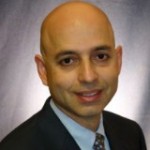


What is LATISSE® (bimatoprost ophthalmic solution) 0.03%?
topLATISSE® solution is a prescription treatment for hypotrichosis used to grow eyelashes, making them longer, thicker and darker.

What is hypotrichosis of the eyelashes?
topHypotrichosis is another name for having inadequate or not enough eyelashes.

How does LATISSE® work?
topLATISSE® is believed to affect the growth (anagen) phase of the eyelash hair cycle in two ways: first, it increases the length of this phase; and second, it increases the number of hairs in this growth phase. The exact way it works is unknown.

How do I apply LATISSE®?
topLATISSE® solution is a once-a-day treatment you apply yourself each evening to the base of the upper eyelashes. DO NOT APPLY in your eye or to the lower lid because excess hair growth outside the treatment area may occur. See the full instructions in How to Apply, and apply as instructed by your doctor.

How soon will I see results?
topLATISSE® users may see results at 8 weeks with full results at 12 to 16 weeks. The growth is gradual overnight, over time.

Is LATISSE® a replacement for mascara?
topNo, LATISSE® does not work in place of mascara. LATISSE® is a solution treatment for inadequate or not enough lashes and requires a prescription from a doctor. However, mascara can be used on your eyelashes in addition to LATISSE®.

Is LATISSE® (bimatoprost ophthalmic solution) 0.03% different from nonprescription products that indicate eyelash growth?
topLATISSE® solution is the first and only prescription treatment approved by the FDA for inadequate or not having enough eyelashes, growing them longer, fuller and darker.

What if I forget to apply one night? Or a few nights?
topIf you miss an application or a few, don’t try to catch up. Just apply the LATISSE® treatment the next evening and stay on schedule.

What happens if I stop using LATISSE®?
topIf you stop using LATISSE®, your eyelashes are expected to return to their previous appearance over several weeks to months.

Can I get a prescription for LATISSE® from any doctor?
topFirst, ask your doctor if LATISSE® is right for you. Although any doctor can prescribe LATISSE®, some may be more familiar with this product than others.

What are the possible side effects of LATISSE®?
top
The most common side effects after using LATISSE® solution are an itching sensation in the eyes and/or eye redness. This was reported in approximately 4% of patients. LATISSE® solution may cause other less common side effects which typically occur on the skin close to where LATISSE® is applied, or in the eyes. These include skin darkening, eye irritation, dryness of the eyes, and redness of the eyelids.
If you develop a new ocular condition (e.g., trauma or infection), experience a sudden decrease in visual acuity, have ocular surgery, or develop any ocular reactions, particularly conjunctivitis and eyelid reactions, you should immediately seek your physician’s advice concerning the continued use of LATISSE® solution.

Are there any special warnings associated with LATISSE® use?
top
LATISSE® solution is intended for use on the skin of the upper eyelid margins at the base of the eyelashes. Refer to the illustration below. DO NOT APPLY to the lower eyelid. If you are using LUMIGAN® or other products in the same class for elevated intraocular pressure (IOP), or if you have a history of abnormal IOP, you should only use LATISSE® under the close supervision of your physician.
LATISSE® use may cause darkening of the eyelid skin which may be reversible. LATISSE® use may also cause increased brown pigmentation of the colored part of the eye which is likely to be permanent.
It is possible for hair growth to occur in other areas of your skin that LATISSE® frequently touches. Any excess solution outside the upper eyelid margin should be blotted with a tissue or other absorbent material to reduce the chance of this from happening. It is also possible for a difference in eyelash length, thickness, fullness, pigmentation, number of eyelash hairs, and/or direction of eyelash growth to occur between eyes. These differences, should they occur, will usually go away if you stop using LATISSE®.

What should I do if I wear contact lenses?
topContact lenses should be removed prior to application of LATISSE® and may be reinserted 15 minutes following its administration

What should I do if I get LATISSE® in my eye?
topLATISSE® solution is an ophthalmic drug product. If any gets into the eye, it is not expected to cause harm. The eye should not be rinsed.

Who should NOT use LATISSE®?
topDo not use LATISSE® solution if you are allergic to one of its ingredients.

What are the ingredients in LATISSE®?
topActive ingredient: bimatoprost
Inactive ingredients: benzalkonium chloride; sodium chloride; sodium phosphate, dibasic; citric acid; and purified water. Sodium hydroxide and/or hydrochloric acid may be added to adjust pH. The pH during its shelf life ranges from 6.8 — 7.8.

What is skin hyperpigmentation?
topThis is a common, usually harmless condition in which areas of skin become darker than the surrounding skin color. This occurs when there is an increase in the melanin, the brown pigment that produces normal skin color, in the skin. Skin hyperpigmentation is a possible side effect of LATISSE®, but may be reversible after discontinuation of the product.

What is elevated intraocular pressure (IOP)?
topThis is a condition where the pressure inside the eye is higher than normal. LATISSE® may decrease IOP. So talk to your doctor if you are using IOP-lowering medications. Concurrent administration of LATISSE® and certain IOP-lowering medications in ocular hypertensive patients should be closely monitored for changes in intraocular pressure.

What should I do if I experience eye redness?
topEye redness may occur immediately after use. Consult your doctor if the redness persists or you notice other symptoms as well. If you develop a new eye condition (e.g. trauma or infection), experience a sudden decrease in visual acuity, have eye surgery, or develop any eye reactions, particularly conjunctivitis and eyelid reactions, you should immediately seek your physician’s advice concerning the continued use of LATISSE®.

Could LATISSE® cause the color of my eyes to change?
topIncreased brown iris pigmentation has occurred when the same formulation of bimatoprost ophthalmic solution was instilled directly into the eye to treat elevated intraocular pressure/glaucoma. Although iris pigmentation was not reported in clinical studies with LATISSE®, patients should be advised about the potential for increased brown iris pigmentation which is likely to be permanent

Why do the directions say to only apply LATISSE® solution to the base of the upper eyelashes?
topA clinical trial of LATISSE® was conducted on patients who applied the product to the base of their upper lashes only. Do not apply in your eye or to the lower lid. There is the potential for hair growth to occur in areas where LATISSE® solution comes in repeated contact with the skin surface. It is important to apply LATISSE® only to the skin of the upper eyelid margin at the base of the eyelashes using the accompanying sterile applicators, and to carefully blot any excess LATISSE® from the eyelid margin to avoid it running onto the cheek or other skin areas.

What should I do if I experience eye itching?
topEye itching may occur immediately after use. Consult your doctor if the itching persists or you notice other symptoms as well. If you develop a new eye condition (e.g. trauma or infection), experience a sudden decrease in visual acuity, have eye surgery, or develop any eye reactions, particularly conjunctivitis and eyelid reactions, you should immediately seek your physician’s advice concerning the continued use of LATISSE .
![]()









